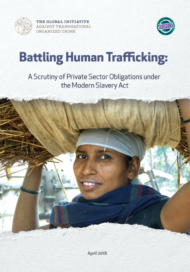Posted on 13 Apr 2014
On the 8th April, the Global Initiative co-hosted a webinar with the UN Global Compact on 21st Century cybercrime threats and the challenges they present to human security and human rights.
The panel featured the following speakers drawn from the Global Initiative Network of experts:
- Peter Gastrow, Senior Advisor: Global Initiative against Transnational Organized Crime
- Troels Oerting, Head: European Cybercrime Centre (EC3), EUROPOL
- Raj Samani, VP, Chief Technical Officer, McAfee
- Julio Alejandro Téllez Valdés, Professor National Autonomous University of Mexico (UNAM)
A vibrant discussion panel at the Global Initiative Launch explored the myriad of ways that the internet has fundamentally changed the nature of organized crime and opened a Pandora’s box of illicit activity that it is now impossible to close. Internet usage is increasing, inevitable, and all-encompassing: individuals, institutions, and states are becoming more linked to the web and to each other through all aspects of their lives and work – it is expected that the internet will double in size every five years. With this comes a host of complex challenges: malicious software, targeted attacks, data theft, cyber-enabled terrorism, internet enabled frauds, thefts and crimes, including those that target society’s most vulnerable – women and children.
With advances in technology, cybercrime is of increasing global concern for companies and individuals alike. Private companies bear most of the costs of cybercrime: the average annualized cost of cybercrime incurred per organization was $11.56 million, with a range of $1.3 million to $58 million. This is an increase of 26 percent, or $2.6 million, over the average cost reported in 2012. But this is then passed to the consumer in the form of higher prices.
The internet has webbed us together, and in doing so has brought new vulnerabilities. Middle-income and developing countries have yet to develop the security protocols and the cyber-awareness levels required to break down some of the biggest vulnerabilities in the net. Shared solutions which engage a wider range of stakeholders are urgently required.
The panel sought answers to vexing questions such as how to reconcile the seemingly contradictory imperatives of people’s right to online privacy on the one hand and their right to safety and protection from cybercrime on the other. The panel also explored ways to mitigate the “tidal wave” of cybercrime that is coming our way and panelists spoke of the urgent need for cross-border and cross-sector collaboration in the fight against cybercriminals who are themselves joining forces across the globe to further the breadth and scope of their assaults.
Listen to the webinar discussion below, or read the report of the meeting.



